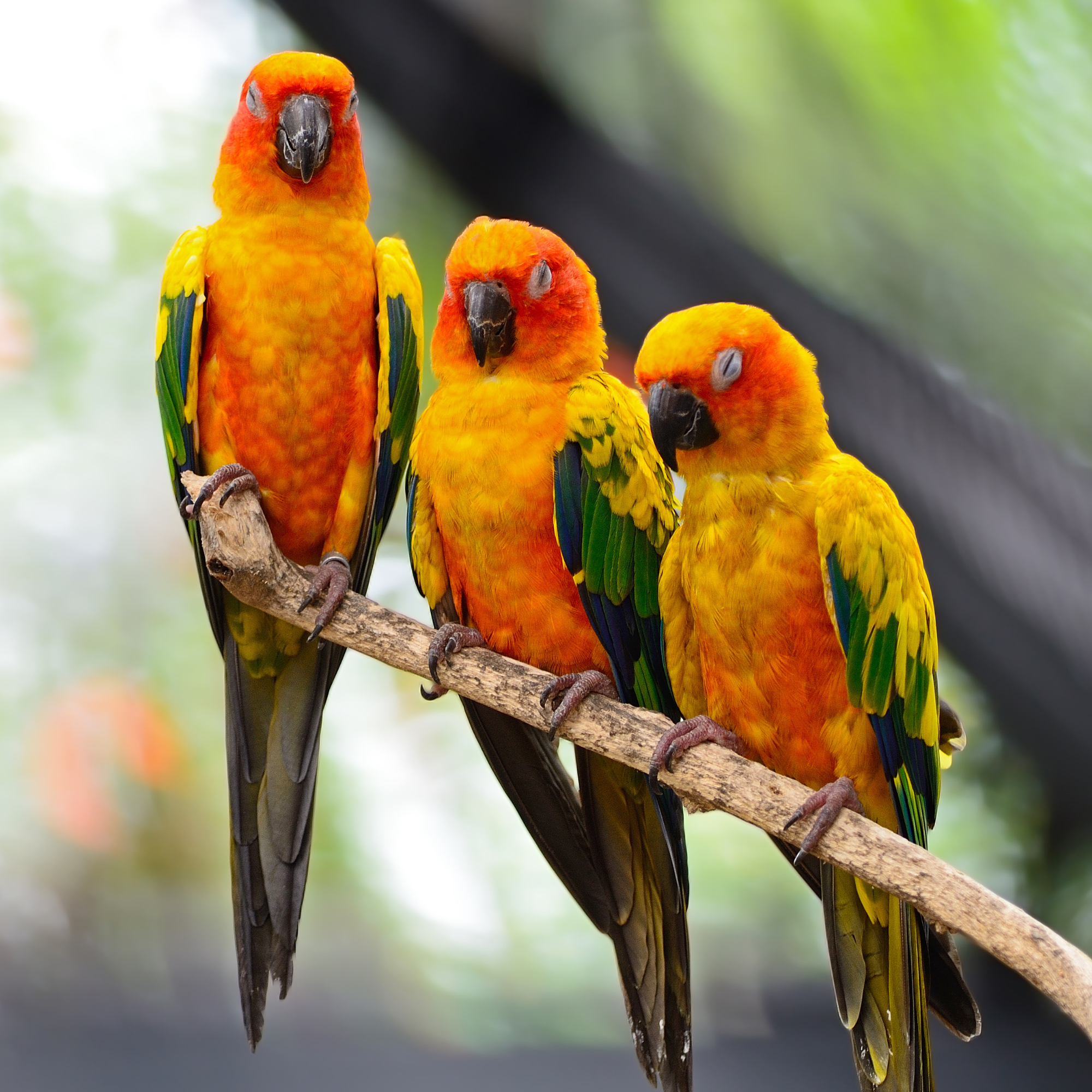Sun Conure - OFF DISPLAY
Aratinga solstitialis

Distribution:
Native to North-Eastern South America
Habitat:
Coastal forests
Diet:
Seeds, nuts, fruits, berries and flowers
Gestation:
They breed in February, nesting in a hollow tree. They will lay about four eggs, incubated for 30 days. Young birds leave the nest eight weeks after hatching.
Predators:
Humans
Conservation Status:
Least concern, but uncommon in at least parts of their natural range.
General:
The sun conure (Aratinga solstitialis) is a medium-sized brightly colored parrot species found in a relatively small region of northeastern South America.
The sun conure’s exact habitat requirements remain very poorly known by scientists. Sun conures are found in coastal forests, the edge of humid forests, savanna, and palm grove habitats.
The Latin name ‘Aratinga’ means ‘little macaw’. It is much admired for its bright plumage, and large numbers have unfortunately been illegally caught for the pet trade.
The sun conure is a very social bird and in the wild they typically live in flocks of 10 to 30 individuals, rarely leaving their flock. Lifespan can be 25-30 years.
These flocks are normally very quiet when feeding, but are much more vocal when in flight making loud noises. They are fast flyers and are capable of traveling for many miles in a single day.
